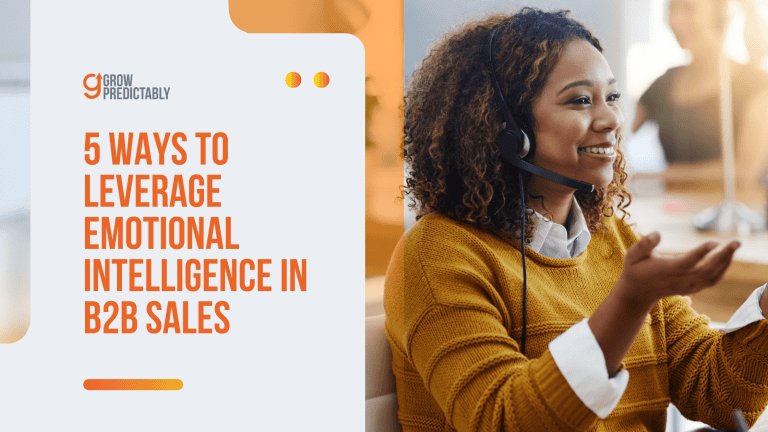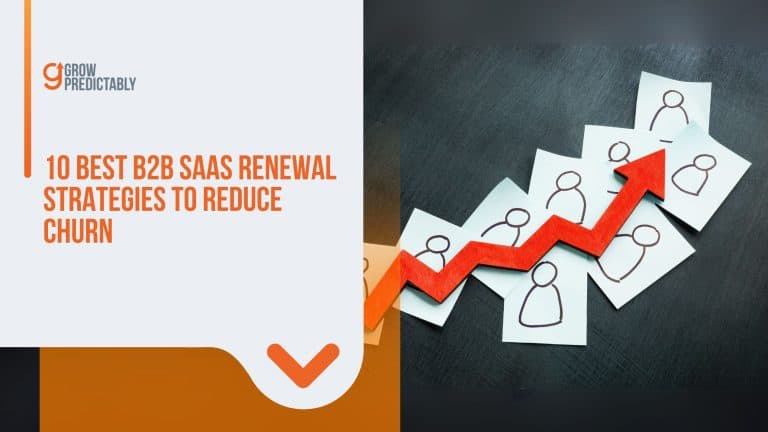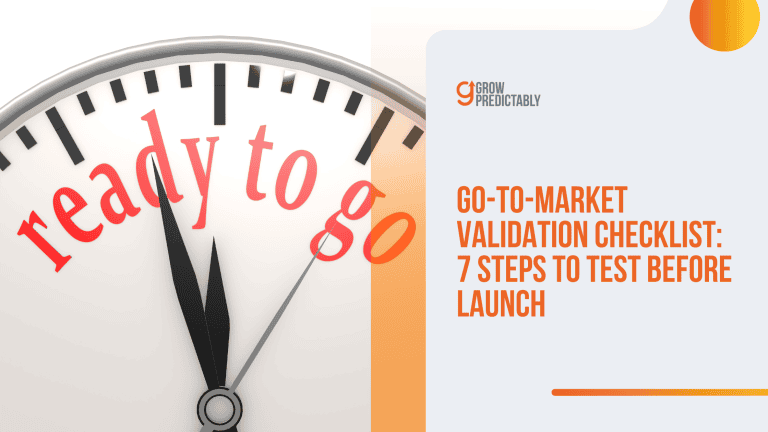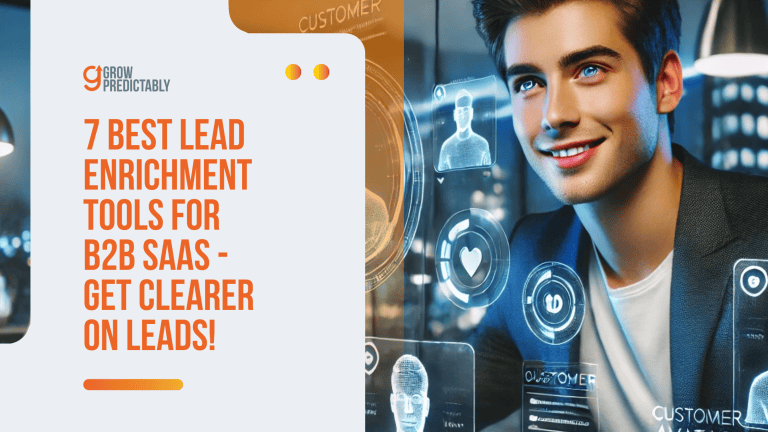What Good B2B Marketing Campaigns Do (10 Examples to Learn From)
Most businesses copy what they think makes good B2B marketing campaigns, but it rarely works.
Why? Because they focus on trendy ideas rather than what’s actually effective.
When you reverse engineer campaigns from IBM, Slack, Upwork, and more you’ll see an entirely different approach.
These campaigns nailed humor, authenticity, and value—all while hitting quantifiable results.
Curious how they did it and how you can copy these strategies yourself?
Let’s break it down one by one from 10 different successful examples.
1. Slack’s “So yeah, we tried Slack”
Slack hit marketing jackpot with their mockumentary-style campaign that turned workplace communication nightmares into comedy gold.
Picture a fake documentary following a real company’s painful transition from email chaos to Slack – complete with dramatic zooms on frustrated faces and those classic “talking head” interviews we all know from The Office.
The genius? They didn’t just make stuff up.
They shadowed actual Sandwich Video employees, capturing their genuine “before Slack” horror stories: endless email threads, lost files, and those dreaded “did you get my message?” moments.
The campaign nailed it by poking fun at problems their target audience faced daily.
The results were no joke: 1.3 million impressions within days. Why?
Instead of another boring business-to-business SaaS pitch, they targeted potential customers by serving up relatable office drama with a side of solutions.
The video showed real people celebrating actual wins – like cutting internal emails by 80% and finally finding that document buried in their inbox from three months ago.
You can check the actual video right below.
The campaign’s secret sauce was its perfect balance of self-awareness and problem-solving.
They weren’t just selling software; they were telling viewers, “Yeah, we know your pain, and we’ve got the remedy.”
This approach struck such a chord that it became a template for their future campaigns, proving that sometimes the best way to tackle business problems is to laugh at them first.
Copy this approach
For B2B marketers and agency professionals, Slack’s campaign success shows how turning common workplace frustrations into relatable content can outperform traditional corporate messaging.
The key takeaway is authenticity in storytelling. Instead of focusing on features, showcase real people facing real problems your solution solves.
You can apply this to your business to business B2B marketing by documenting your actual customers’ transformation stories.
Film their team’s journey, capture genuine reactions, and highlight measurable improvements.
This creates content that resonates with prospects facing similar challenges in their organizations.
2. Adobe’s “Click, Baby, Click”: When Office Humor Meets Marketing Gold
Picture this: You’re drowning in endless spreadsheets, fighting with clunky software, and daydreaming about throwing your computer out the window.
Adobe nailed this universal pain point in their “Click, Baby, Click” campaign, turning mundane office frustrations into comedy gold.
Here’s where it gets interesting: Adobe didn’t just make people laugh. And?
Because they tapped into a simple truth: everyone’s been that person fighting with technology while their coffee gets cold.
Find out here how Adobe presented the gravity of their target audience’s problem in the video below.
The secret sauce was how they balanced humor with actual solution-showing.
The video subtly demonstrated Adobe’s products solving real problems but wrapped it in enough comedy that it never felt like a hard sell, showcasing how social media marketing can amplify relatable content.
When your target audience starts quoting your B2B marketing campaign during coffee breaks, you know you’ve struck a nerve – and that’s exactly what Adobe achieved with this perfectly calibrated mix of relatability and humor.
Copy this approach
Adobe’s campaign demonstrates how turning everyday workplace frustrations into entertaining content can create viral marketing moments.
The campaign succeeded by addressing real pain points through humor, making complex solutions more approachable.
You can adapt this approach by identifying your customers’ common challenges and creating relevant content that pokes fun at these situations.
Use relatable scenarios and characters, but always tie them back to your solution.
Remember to balance entertainment with clear value proposition – make them laugh while showing how your product makes their work life better.
3. Sumo Logic’s Content Marketing Glossary Campaign: A B2B Education Powerhouse
When most B2B companies were pushing product-first content, Sumo Logic zigged where others zagged.
They built a comprehensive tech glossary that didn’t just define terms – it owned them in the search results.
Sumo Logic is a cloud-based platform that helps businesses monitor and analyze their digital operations in real-time. The platform collects and processes massive amounts of machine data, turning it into useful insights about security threats, application performance, and customer experience. This helps IT teams spot and fix problems quickly.
Here’s what made their campaign crush it:
- Content Architecture
- Built modular, interconnected entries (not isolated definitions)
- Created topic clusters with primary/secondary terms
- Focused on high-intent search terms with buying potential
- The Execution
- Wrote with practitioners in mind, not textbook definitions
- Added real-world examples and use cases
- Used clear language while maintaining technical accuracy
- Integrated relevant product mentions naturally (not forcefully)
- The Distribution Game
- Optimized each entry for featured snippets
- Built internal linking architecture for search engine optimization juice, setting a strong foundation for digital marketing success
- Promoted through tech communities and forums
- Leveraged employee advocacy for amplification
The Results? Pretty epic:
- 4.3M organic impressions in 12 months
- 3,000+ quality backlinks from industry sites
- 40% increase in organic traffic to product pages
- Reduced customer education costs by 35%
Copy this approach
Sumo Logic’s glossary campaign shows how educational content can drive serious business results when done strategically.
The key lesson is to create relevant content that actually helps your target audience do their jobs better.
Focus on building comprehensive, interconnected content that answers real questions your prospects are searching for.
Start by identifying the key terms in your industry, create detailed explanations with practical examples, and organize them in topic clusters.
Remember to optimize for search engines and distribute through marketing channels where your technical audience already hangs out.
4. Usergems’ Game-Changing ABM Campaign
Picture this: Your ads speaking directly to dream accounts like they’re in the room.
That’s exactly what Usergems pulled off with their 1:1 ABM campaign that crushed typical ad metrics.
The secret sauce? They ditched the spray-and-pray approach and went surgical.
UserGems helps B2B marketing teams track job changes of their key contacts and buyers. When these contacts move to new companies, UserGems alerts you automatically. This helps you find new sales opportunities and keep your customer database current, making it easier to reach decision-makers at the right time.
Each ad was custom-built for specific target accounts using their movement data and company info.
When a VP of Sales at a target company saw an ad, it felt like it was made just for them – because it was.
Usergems nailed this B2B marketing campaign so well that they even launched a masterclass to teach their target audience the same strategy.

The numbers tell the story: Their CTR shot up 10x compared to standard ads. But here’s the real kicker – these hyper-targeted ads ended up driving 15% of their total pipeline.
Not too shabby for a focused campaign.
Key moves that made it work:
- Used intent data to spot companies actively hunting for solutions within their target market
- Created ads that spoke to specific pain points of each target account
- Deployed ads only when key decision-makers were most likely to see them
- A/B tested different personalized messages to find what resonated
Copy this approach
UserGems’ campaign proves that ultra-personalized account-based marketing efforts can deliver exceptional results when done right.
You can apply this approach by first identifying your ideal target accounts and gathering specific data about their pain points and needs.
Then, create highly personalized ads that speak directly to each account’s challenges.
Focus your budget on reaching actual decision-makers at these companies. Test different messages that reference their specific industry challenges or goals.
This targeted approach might cost more per ad but delivers better quality leads and higher conversion rates.
5. IBM’s “Every Second Counts” Campaign
IBM nailed it with its cyber resilience campaign by turning a typically dry topic into something people actually wanted to watch.
They created a 3-minute video showing an IT team scrambling to contain a cyber attack, but with a twist – it played out like a sitcom, complete with office mishaps and that “we’ve all been there” vibe.
The secret sauce? They didn’t just dump tech jargon on viewers.
Instead, they showed real people dealing with real panic – like that one guy frantically trying to remember which sticky note had the backup server password (spoiler: it was under his keyboard the whole time).
The campaign was a hit because of its mix of humor and actual cyber security lessons.
On the execution front, IBM got crafty.
They rolled out the video across LinkedIn and Twitter first, exemplifying a smart social media marketing strategy aimed at IT professionals.
They also chopped the main video into 15-second snippets – perfect for social sharing, and those with goldfish-level attention spans.
The numbers spoke volumes: 4.8 million views in the first week, 82% engagement rate on LinkedIn, and a 24% jump in brand consideration among IT decision-makers.
More importantly, it got people talking about cyber resilience without putting them to sleep – a rare feat in the tech world.
Copy this approach
IBM’s campaign shows how to make complex technical topics engaging by adding a human element and humor.
You can adapt this strategy by turning your technical product stories into relatable scenarios.
Create content that shows real people facing common workplace challenges that your solution addresses.
Break down longer content into bite-sized pieces to spread around for your social media campaign, and focus distribution on marketing channels or platforms where your targeted business professionals spends time.
Remember to balance entertainment with educational value – make them smile while learning about your solution’s benefits.
6. Upwork’s “Hey World” Campaign: Bold Moves in B2B Targeting
In 2020, Upwork threw the traditional B2B playbook out the window with their “Hey World” campaign, hitting major brands where they least expected it.
The freelance platform took aim at household names like Nike, Spotify, and Samsung with laser-focused social posts and outdoor ads that felt more like friendly callouts than corporate messaging.
Picture Times Square: A massive billboard reads, “Hey Nike, this whole work thing? Let’s just do it.”
The campaign’s genius lay in its surgical precision.

Each message was custom-crafted for its target, mixing playful jabs with serious business sense.
For Samsung, they went with a campaign headline that says, “Hey Samsung, let’s fold our talents together,” which is a clever nod to the brand’s foldable phones.
The numbers tell the story: The campaign drove a 50% jump in enterprise client sign-ups.
More impressively, 75% of targeted companies engaged with Upwork’s posts, turning them into potential customers.
Key strategy takeaway: Upwork showed that B2B marketing efforts don’t need to play it safe. They combined:
- Hyper-personalized messaging
- High-visibility placements
- A conversational, almost cheeky tone
- Perfect timing during the remote work boom
The campaign’s secret sauce? It treated giant corporations like humans, not faceless entities.
It proved that even in B2B, personality beats corporate speak every time.
Copy this approach
Upwork’s campaign demonstrates how bold, personalized messaging can cut through corporate noise and grab attention from major clients.
You can adapt this approach by creating targeted messages that speak directly to specific companies you want to work with.
Use their own brand voice, reference their products, or play with their slogans in your outreach.
Remember to keep the tone conversational and slightly playful while maintaining professionalism.
This personalized approach might take more effort, but it can lead to higher engagement rates and better-quality conversations with potential clients.
7. GE’s “Unimpossible Missions”: Breaking Physics and Building Brand Love
GE knocked it out of the park with their “Unimpossible Missions” campaign, turning complex science into must-watch content.
The campaign challenged common phrases like “catching lightning in a bottle” by actually doing them – yeah, they really did that.
At the awareness stage, GE dropped mind-bending videos across YouTube and social media channels, showing their engineers tackling “impossible” feats.
These weren’t your typical corporate videos – they were Netflix-worthy mini-documentaries that made science look cool.
You can watch the video yourself.
The engagement phase was where things got interesting.
GE’s scientists and engineers became the stars, explaining how they used company tech to defy physics.
This human touch transformed dense technical concepts into relatable stories.
Viewers could dive deeper through an interactive website featuring behind-the-scenes content and technical breakdowns.
The campaign nailed the subscribe and convert stages by offering exclusive content to those who signed up for updates.
Think engineering insights, future mission previews, and career opportunities at GE.
Each mission sparked “aha moments” as viewers realized GE wasn’t just making washing machines – they were pushing the boundaries of what’s possible.
The results? GE’s campaign racked up millions of organic views and sparked thousands of STEM conversations.
More importantly, it repositioned GE from “that appliance company” to a cutting-edge tech innovator where brilliant minds solve impossible problems.
Copy this approach
GE’s campaign shows how turning complex technical capabilities into engaging stories can transform brand perception.
You can adapt this approach by finding creative ways to demonstrate your expertise.
Instead of just listing features, create content that shows your team solving real challenges in unexpected ways.
Build a content series that starts with attention-grabbing demonstrations, then leads into deeper technical explanations and educational content.
This helps you engage prospects at different levels while positioning your brand as an innovative problem-solver in your industry.
8. Gong’s Super Bowl Splash: Turning 30 Seconds into Lasting Impact
Picture this: A B2B software company turns event marketing on its head by dropping into the Super Bowl ad scene like a revenue intelligence ninja.
That’s exactly what Gong did, but they weren’t just buying airtime – they were buying mindshare.
Here’s what made the Gong Super Bowl campaign hit different:
- Pre-game social heat
- Leaked “behind-the-scenes” footage on LinkedIn
- Employee advocacy program that turned staff into content creators
- Strategic Reddit drops that sparked organic conversations
- The ad itself? A masterclass in B2B psychology:
- 30 seconds of revenue intelligence explained through interpretive dance
- A dash of self-aware humor that poked fun at traditional enterprise software
- Zero jargon, all personality
- Post-game amplification:
- Free swag campaign tied to specific moments in the ad
- A dedicated social media marketing war room responding in real-time drove sustained engagement
- Custom landing page with interactive elements from the commercial
The results? Their LinkedIn engagement jumped 312% week-over-week, and brand searches spiked 470% during the post-game hours.
Even better – their sales team reported a 40% increase in warm outbound response rates in the following month.
Gong didn’t just buy an ad slot – they bought a conversation starter and knew exactly how to keep that conversation going.
Copy this approach
Gong’s campaign shows how building buzz around a single big moment can create lasting impact when you have a solid pre and post-launch strategy.
You can apply this approach to any major B2B marketing moment – not just Super Bowl ads.
Build anticipation through social media campaign teasers and employee advocacy. Create content that’s refreshingly different from typical B2B messaging.
After your big moment, keep the momentum going with interactive content, engagement on social media channels, and targeted follow-up campaigns.
Remember, success comes from the complete strategy around your main event, not just the event itself.
9. EDS’s “Cat Herders” Campaign: A Masterclass in Corporate Humor
Electronic Data Systems (EDS) struck marketing gold in 2000 with their “Cat Herders” Super Bowl commercial, which brilliantly transformed a complex message about managing IT systems into a laugh-out-loud metaphor.
The 60-second spot featured tough-as-nails cowboys herding thousands of cats across the rugged American West, complete with scratches, yarn balls, and cat-grooming sessions.
Watch it here.
Clearly, this is a very old marketing campaign to learn from. But, it is an evergreen example of simplifying a message.
The genius of the campaign lay in its three-pronged strategy:
- Visual absurdity: By showing weathered cowboys treating cats like cattle, EDS created an instantly memorable image that stuck in viewers’ minds
- Relatable metaphor: The phrase “like herding cats” resonated with anyone who’s managed complex projects
- Self-aware corporate messaging: Instead of dry tech-speak, EDS acknowledged the challenges of IT management with a wink
Results? The campaign delivered.
It ranked #1 in USA Today’s Ad Meter, generated millions in earned media, and most importantly, simplified EDS’s complex service offering for potential clients.
Even 20+ years later, it’s studied in marketing classes as a perfect example of using humor to demystify B2B services.
Copy this approach
EDS’s campaign demonstrates how a clever metaphor can make complex services instantly understandable and memorable.
You can apply this approach by finding the perfect analogy for your complex product or service. Look for comparisons that are visual, universally understood, and slightly humorous.
Connect these metaphors to common challenges your customers face.
Even without Super Bowl ad budgets, you can create content that uses relatable scenarios to explain your value proposition.
The key is making your target audience smile while helping them understand exactly how you solve their problems.
10. Cisco’s “The Network. Intuitive” Campaign Breakthrough
Cisco tackled a complex challenge head-on: making enterprise networking technology captivating.
Their approach? Raw, demonstrable proof through a video series that put their self-learning network in the spotlight.
Here’s the meat of their strategy:
Key execution elements:
- Created a series of “dare to fail” live demos, including a network defending itself against malware in real-time
- Deployed quick-hit, 15-30 second video snippets showing the technology preventing security breaches
- Leveraged LinkedIn and Twitter for targeted B2B distribution, focusing on IT decision-makers
- Used simple, jargon-free language to explain complex concepts (“The network that learns, adapts, and protects”)
Results that matter:
- 8.6M views across social platforms within the first 30 days
- 26% increase in enterprise customer inquiries
- Featured in 146 tech publications, generating earned media value of $3.2M
- Sales pipeline growth of 43% for the networking division
The campaign’s secret sauce? Rather than relying on corporate speak, Cisco showed its technology in action through nail-biting demonstrations.
They essentially turned product demos into mini-action movies, proving their claims rather than just making them.
Copy this approach
Cisco’s campaign shows how live demonstrations can turn technical features into compelling content that proves your product’s value.
You can adapt this approach through video marketing that shows your product solving real problems in real-time.
Skip the PowerPoint slides and actually demonstrate how your solution works.
Break down complex features into short, digestible video clips focused on specific benefits.
Share these across LinkedIn and other professional platforms where your decision-makers spend time.
Remember, showing is always more powerful than telling in B2B marketing.
Lessons Learned from Effective Campaigns
Looking at standout B2B marketing wins, several key patterns emerge that separate good campaigns from game-changers.
Let’s break down what actually moves the needle:
- Smart Humor That Fits
- Skip the dad jokes and forced memes
- Target industry pain points with clever observations
- Use self-aware content that shows you “get it”
- Channel Mix Mastery
- LinkedIn for thought leadership and direct engagement
- Twitter for real-time industry conversations
- Email for nurturing qualified leads
- Video marketing content for complex product demos
- Common Pitfalls to Dodge
- Over-automation that feels robotic
- Generic messaging that speaks to no one
- Chasing trends without strategic fit
- Neglecting mobile optimization
- Winning Moves Worth Copying
- Build content around customer success stories
- Use data visualization to simplify complex ideas, enhancing digital marketing efforts
- Create interactive tools prospects actually want
- Deploy account-based marketing for big fish and consolidate fragmented marketing assets to streamline outreach
- Distribution Strategy That Works
- Time content drops for peak engagement
- Cross-promote across owned channels, prioritizing social media marketing to maximize visibility
- Leverage employee networks strategically
- Test and optimize paid promotion
Start small, measure obsessively, and scale what works, especially for event marketing strategies that offer clear ROI.
The best campaigns didn’t nail it overnight – they evolved through constant refinement and real feedback from their target audience.
Remember: Your prospects are bombarded with content.
Stand out by solving real problems and speaking their language, not just making noise.
Resources to Try
Looking to take your B2B campaigns from good to outstanding?
Here’s your tactical toolbox:
🔧 Campaign Planning & Execution
- HubSpot’s Enterprise Marketing Hub – Advanced segmentation and automation features
- Salesforce Pardot – Full-stack B2B marketing suite with deep analytics
- Ahrefs’ B2B Content Explorer – Data-driven topic research and competitive analysis
📚 Strategic Learning
- LinkedIn Sales Navigator’s Advanced Prospecting Course ($799, but worth it)
- Content Marketing Institute’s B2B Master Class – Fresh case studies every quarter
- Forrester’s Latest B2B Benchmark Reports – Industry-specific data and trends
⚡ Quick-Win Tools
- Clearbit Connect – Enhanced lead data enrichment
- Bombora Intent Data Platform – Real-time buying signals
- DemandBase – Account-based marketing automation
Start with the tool that fills your biggest current gap. Remember, great B2B marketing stacks are built one piece at a time, not all at once.
These aren’t just random tools—they’re the same resources powering some of today’s fastest-growing B2B companies. Pick your weapons wisely.
Mastering the Awareness Stage: Your B2B Marketing Launch Pad
Let’s kick off your B2B marketing campaign where the awareness stage matters most.
This isn’t just about making noise; it’s about strategic visibility that converts.
Here’s your action plan:
- Content Targeting
- Launch industry-specific whitepapers tackling current pain points
- Create data-backed LinkedIn articles (aim for 2-3 weekly)
- Short-form video marketing that explains complex B2B solutions (60-90 seconds)
- Search Visibility Strategy
- Target long-tail keywords specific to your industry niche for search engine optimization
- Optimize Google Business Profile with weekly updates
- Create topic clusters around core B2B services
- Platform Selection
- LinkedIn: Share thought leadership content 3x weekly
- Industry Forums: Participate in relevant discussions
- Trade Publications: Submit guest posts monthly
Pro Tips:
- Skip generic company updates – focus on problem-solving content
- Use real customer challenges in your content
- Track engagement metrics (aim for 3% CTR minimum)
- Test headlines with small LinkedIn ad budgets before major content pushes
Tools to Deploy:
- SEMrush for keyword research
- LinkedIn Sales Navigator for prospect research
- BuzzSumo for content performance tracking
The awareness stage isn’t about selling – it’s about establishing expertise and visibility.
Your content should answer the question, “Why should anyone care?” before they even know they need you.
Start mapping your awareness content today by identifying your top three customer pain points and creating targeted content around each one.








